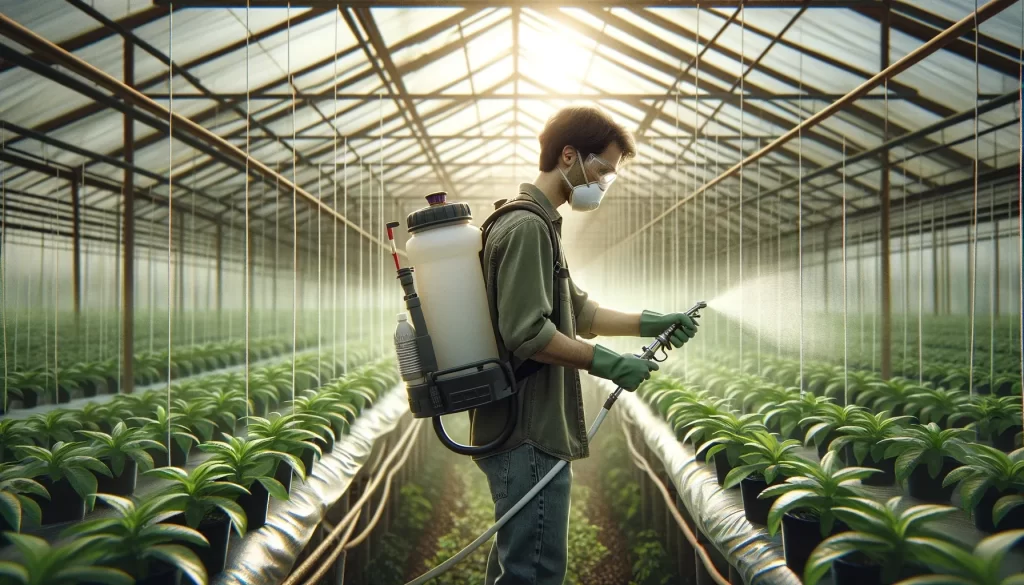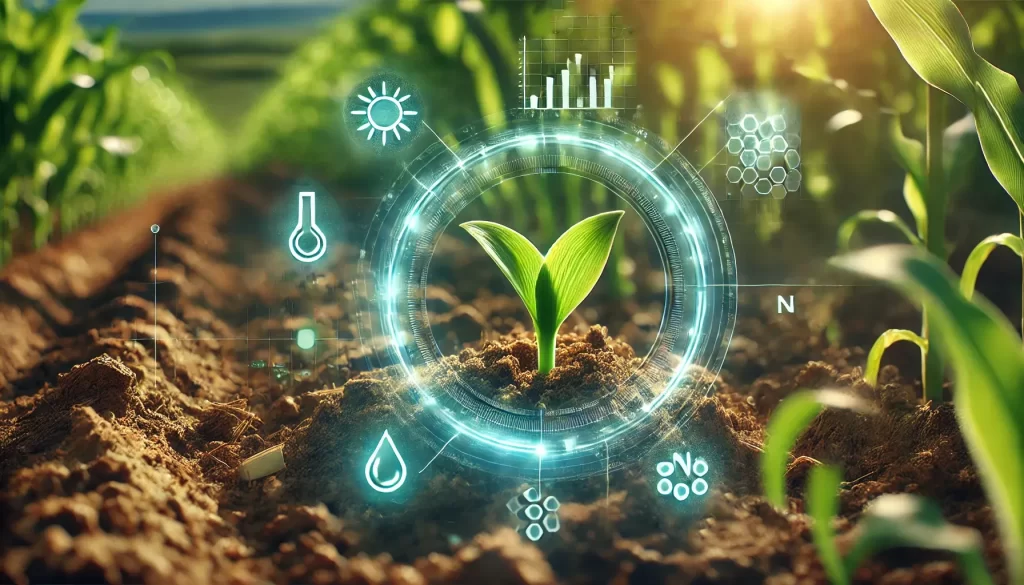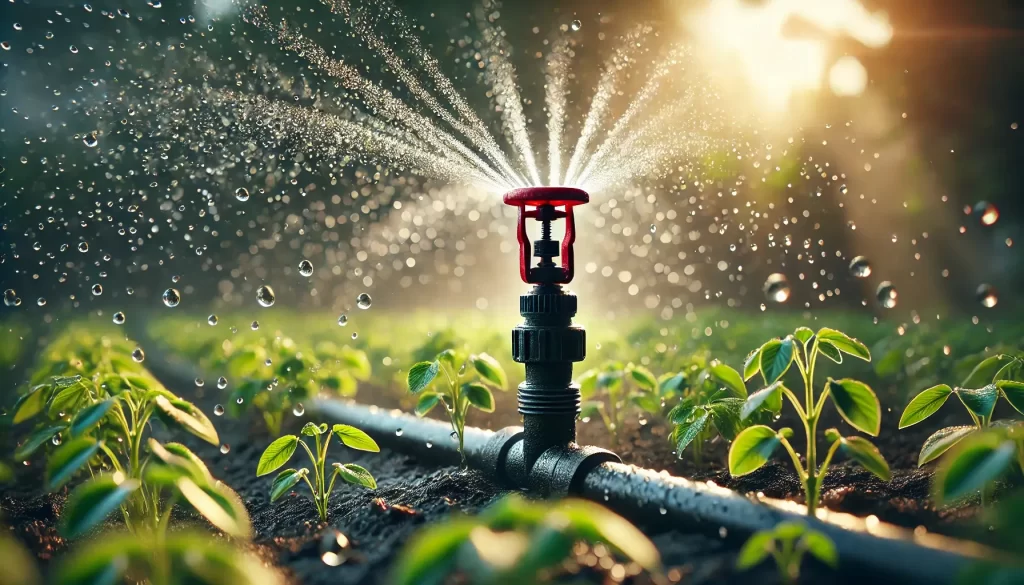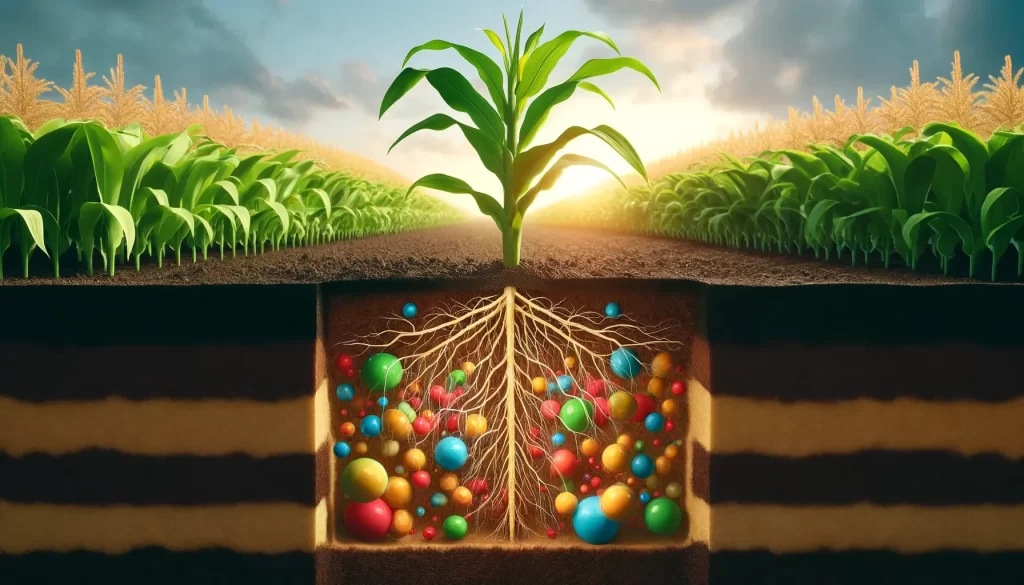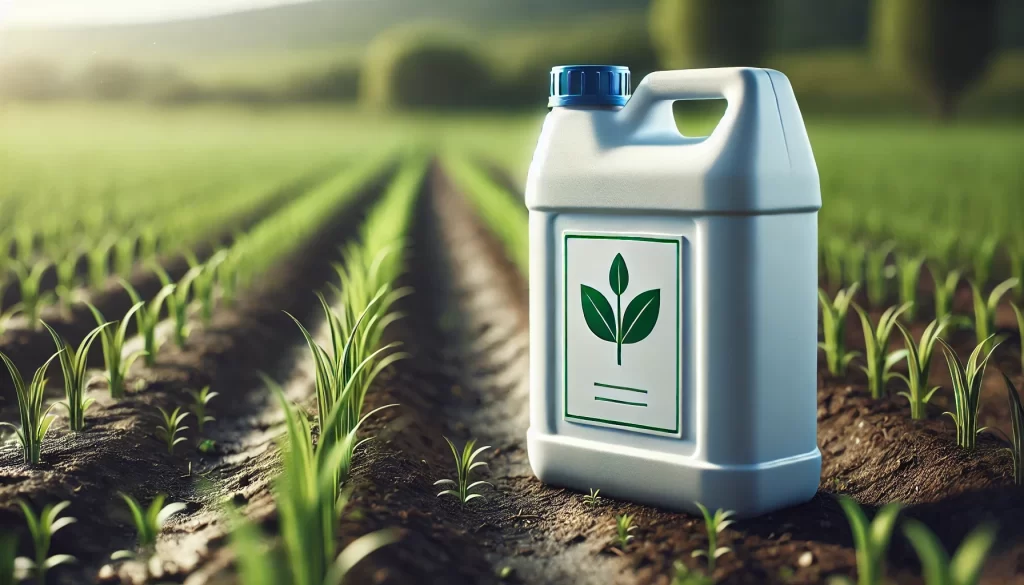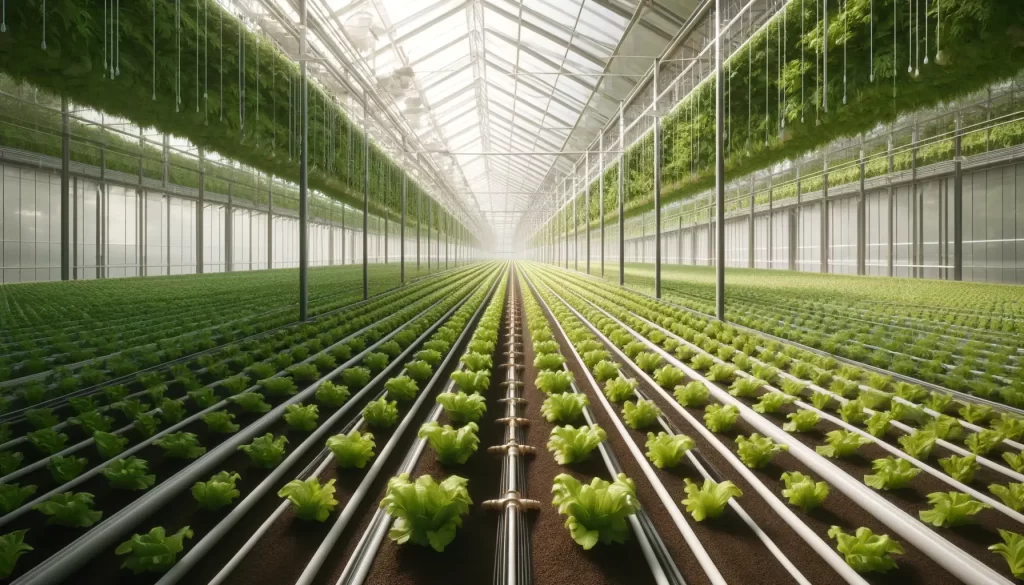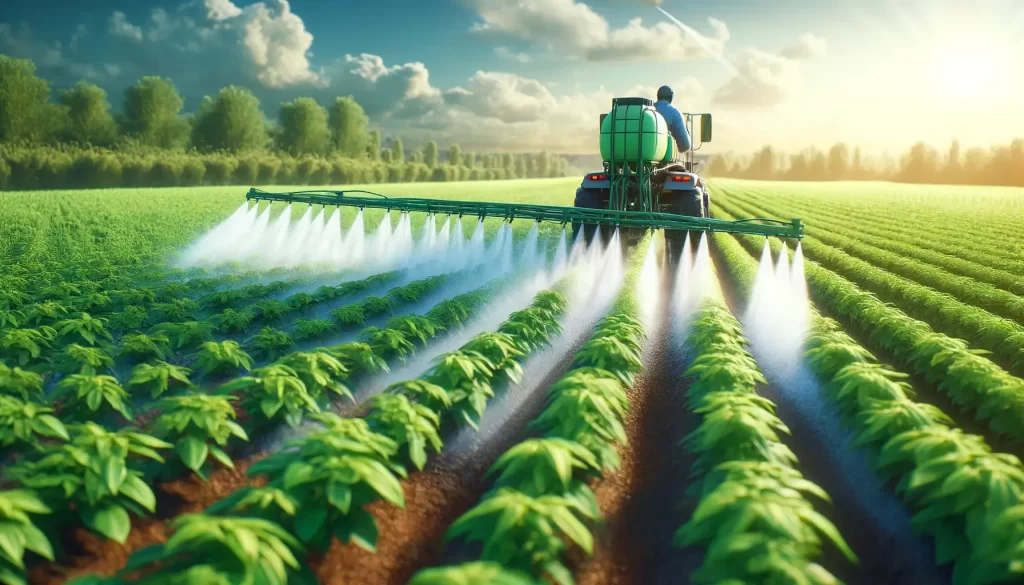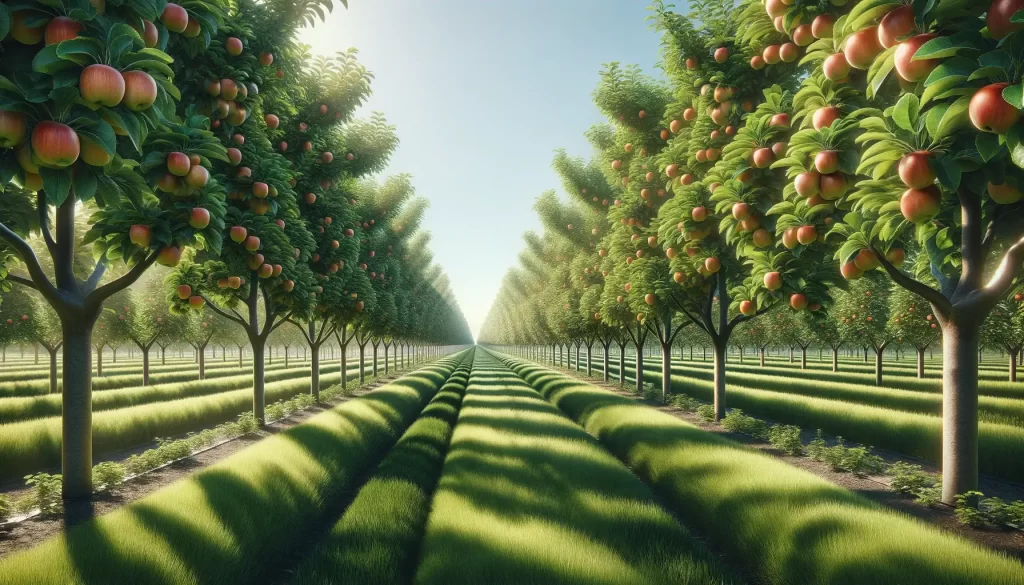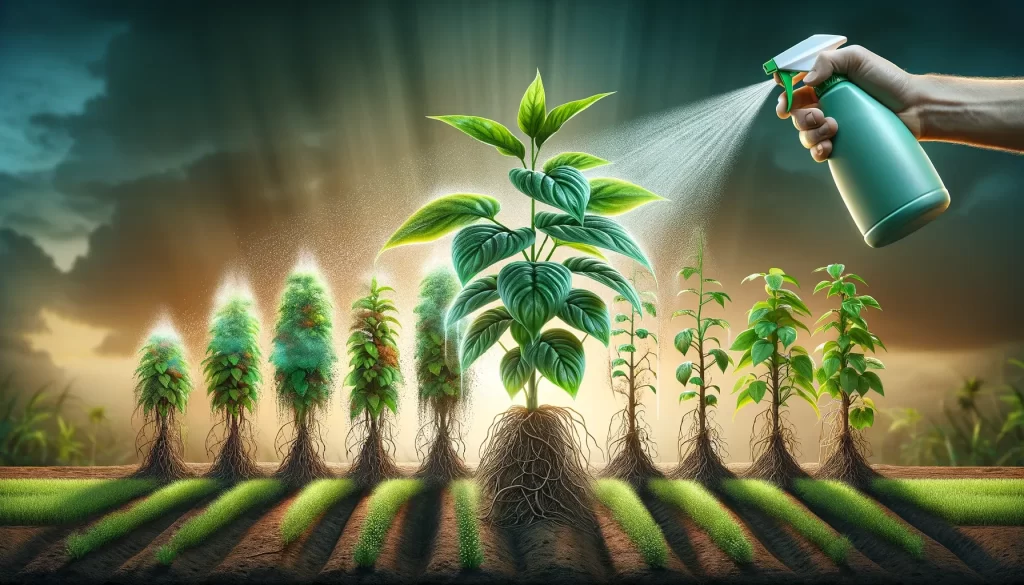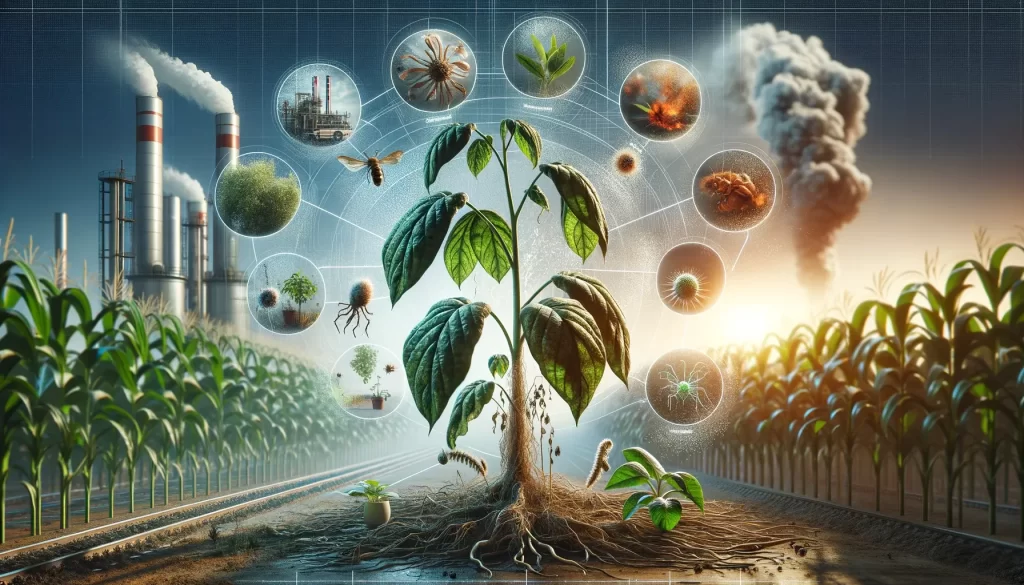Importance and Advantages of Liquid Fertilizers
Liquid fertilizers, one of the most popular and effective methods of plant nutrition in modern agriculture, provide the nutrients that plants need in a form that can be easily absorbed. Offering many advantages compared to solid fertilizers, liquid fertilizers provide faster growth, higher efficiency and better product quality.
Other important advantages of liquid fertilizers are as follows:
- Faster food intake:Liquid fertilizers dissolve in water and are absorbed more quickly and easily by plants. This allows nutrient deficiencies to be eliminated quickly and plants to grow faster.
- More homogeneous distribution: Liquid fertilizers are distributed homogeneously by mixing with irrigation water or directly applied to the soil. This ensures that plants have equal access to nutrients and prevents problems such as nutrient deficiency or excess.
- Easier application: Liquid fertilizers can be easily applied with special equipment. This saves time and labor.
- Less environmental pollution: Liquid fertilizers create less environmental pollution compared to solid fertilizers. It reduces the risk of contamination of nutrients such as nitrogen and phosphorus into soil and water resources.
The Role of Nutrients for Plant Development
Plants need macro and micronutrients to grow and develop healthily. Macronutrients; They are known as nitrogen (N), phosphorus (P) and potassium (K) and are the most important nutrients for plant growth. Micronutrients include elements such as iron (Fe), zinc (Zn), copper (Cu) and manganese (Mn) and play a role in many important functions of plants such as photosynthesis, protein synthesis and resistance to diseases.
Adequate nutritional intake benefits plants in many ways, such as:
- Faster and healthier growth: Nutrients are necessary for the development of plant cells and tissues. Adequate nutrient intake allows plants to grow faster and healthier.
- Higher yield: Nutrients are also necessary for the reproductive functions of plants such as flowering and fruit setting. Adequate nutrient intake allows plants to give higher yields.
- Better product quality: Nutrients increase the taste, nutritional value and shelf life of products. Adequate nutritional intake ensures better quality products.
- Resistance to diseases and pests: Nutrients increase the resistance of plants to diseases and pests. Adequate nutrient intake makes plants more resistant to diseases and pests.
Purpose and Scope of the Article
The purpose of this article is to examine in detail the effects of liquid fertilizers on plant development. The article contains detailed information on liquid fertilizer types, their effects on plant development, their use in different plant species, application techniques and points to consider.
Liquid Fertilizer Types
A wide variety of liquid fertilizers are available on the market. The most common types of liquid fertilizer are:
- Nitrogenous liquid fertilizers: Contains nitrogen necessary for the growth and development of plants.
- Phosphate liquid fertilizers: Contain phosphorus, which is necessary for the root development, flowering and fruit formation of plants.
- Potassium liquid fertilizers: Contain potassium, which is necessary for plants’ photosynthesis, protein synthesis and resistance to diseases.
- Liquid fertilizers containing micronutrients: Contain iron, zinc, copper and manganese, which are necessary for the healthy growth of plants.
- Organic liquid fertilizers: Contain organic substances of plant or animal origin. It increases the organic matter content and water retention capacity of the soil.
- Inorganic liquid fertilizers: Contain chemically synthesized nutrients. It acts faster and has a longer shelf life.
Selection and Use of Liquid Fertilizers
Choosing the right liquid fertilizer and applying it correctly is important to meet the nutritional needs of plants and achieve optimum yield. The following factors should be considered when choosing liquid fertilizer:
- Plant type: Each plant species has its own nutritional requirements.
- Soil type: The pH value, nutrient content and organic matter content of the soil can affect the choice of liquid fertilizer.
- Climatic conditions:Climatic conditions such as rainfall amount, temperature and humidity can affect the effectiveness of liquid fertilizer.
Liquid fertilizers can be applied by various methods, including foliar application, soil application and drip irrigation. Each method has its own advantages and disadvantages.
Effects of Liquid Fertilizers on Plant Development
Plant Growth and Development
Liquid fertilizers provide the nutrients that plants need in a form that can be easily absorbed, allowing plants to grow and develop faster and healthier. Adequate nutrient intake allows plants to grow taller, stronger and have more leaves.
Root Development
Liquid fertilizers, especially those containing phosphorus, stimulate the development of the root system of plants. A strong root system allows plants to absorb more water and nutrients from the soil, making them more drought and disease resistant.
Photosynthesis
Nutrients such as nitrogen, phosphorus and potassium are necessary for photosynthesis. Liquid fertilizers enable plants to photosynthesize, allowing them to receive more solar energy and produce more organic matter.
Flowering and Fruit Set
Nutrients such as phosphorus and potassium are necessary for flowering and fruit set. Liquid fertilizers increase yields by allowing plants to bloom more and set more fruit.
Efficiency and Quality
Liquid fertilizers increase yield and quality by meeting the nutritional needs of plants. Adequate nutrient intake ensures that plants produce more products and that the products are more delicious, nutritious and have a longer shelf life.
Resistance to Diseases and Pests
Liquid fertilizers increase the resistance of plants to diseases and pests. Adequate nutritional intake ensures that the cell walls of plants are stronger and more resistant to disease factors.
Use of Liquid Fertilizer in Different Plant Species
Liquid fertilizers can be used on a wide variety of plant species, including cereals, legumes, oilseeds, vegetables, fruits and spices. Each plant species has unique nutrient requirements and therefore it is important to choose the right liquid fertilizer and apply it correctly.
Cereals: Cereals need nutrients such as nitrogen, phosphorus and potassium. Liquid fertilizers are an ideal fertilization method to meet the nutritional requirements of grains and increase yield.
Legumes: Legumes need nutrients such as nitrogen, phosphorus and potassium. In addition, nitrogen-fixing bacteria found in the roots of legumes have the ability to fix atmospheric nitrogen into the soil. Liquid fertilizers are very useful to meet the nutritional requirements of legumes and increase yields.
Oil Seeds: Oil seeds need nutrients such as nitrogen, phosphorus, potassium and sulfur. Liquid fertilizers are an ideal fertilization method to meet the nutritional requirements of oilseeds and increase yield.
Vegetables: Vegetables need nutrients such as nitrogen, phosphorus, potassium and calcium. Liquid fertilizers are an ideal fertilization method to meet the nutritional requirements of vegetables and increase yield and quality.
Fruits: Fruits need nutrients such as nitrogen, phosphorus, potassium and magnesium. Liquid fertilizers are an ideal fertilization method to meet the nutritional requirements of fruits and increase yield and quality.
Spices: Spices need nutrients such as nitrogen, phosphorus, potassium and zinc. Liquid fertilizers are an ideal fertilization method to meet the nutritional requirements of spices and increase yield and quality.
Liquid Fertilizer Application Techniques
Liquid fertilizers can be applied by various methods, including foliar application, soil application and drip irrigation. Each method has its own advantages and disadvantages.
Foliar Application:
In foliar application, liquid fertilizer is applied to the leaves of the plants with the help of a spray. This method ensures rapid absorption of nutrients by plants. Foliar application is particularly useful in the following situations:
- When plants show symptoms of nutrient deficiency: Foliar application ensures rapid elimination of nutrient deficiencies.
- When the soil is too dry or too moist: When the soil is too dry or too moist, soil application may be difficult or ineffective.
- When a quick effect is desired: Foliar application ensures rapid absorption of nutrients by plants and therefore has a rapid effect.
Soil Application:
In soil application, liquid fertilizer is applied to the soil and absorbed by the plants through the roots. This method is the most common liquid fertilizer application method. Soil application is particularly useful in the following situations:
- Long-term nutrition of plants: Soil application meets the long-term nutritional needs of plants.
- Application in large areas: Soil application is the most suitable method for applying liquid fertilizer in large areas.
Application with Drip Irrigation:
In drip irrigation application, liquid fertilizer is mixed with irrigation water and given to the plants. This method saves water and fertilizer and prevents environmental pollution. Application by drip irrigation is particularly useful in the following cases:
- In areas with water scarcity: Application by drip irrigation saves water and is therefore an ideal method in areas with water scarcity.
- For sensitive plants: Application with drip irrigation meets the nutritional needs of sensitive plants and the risk of damaging the plants is low.
Things to Consider in Liquid Fertilizer Applications
Dose and Timing of Fertilizer:
It is important to apply liquid fertilizers in the right dose and at the right time. Excessive fertilization can damage plants and cause environmental pollution. Insufficient fertilization does not meet the nutritional needs of plants and reduces productivity.
The dose of fertilizer should be determined according to soil analysis, plant type, growth stage and climatic conditions. The timing of fertilizer should be made according to the nutritional needs of the plants.
Application Equipment and Calibration:
It is important to use appropriate equipment to apply liquid fertilizers correctly. Liquid fertilizer application equipment ensures that the fertilizer is distributed homogeneously and reaches the plants equally.
Application equipment should be calibrated regularly. The calibration process ensures that the fertilizer is applied at the correct dose.
Effect of Weather Conditions:
Weather conditions play an important role in liquid fertilizer applications. Fertilizing in windy weather makes it difficult to distribute the fertilizer homogeneously. Fertilizing in rainy weather may cause the fertilizer to wash away.
Liquid fertilization should ideally be done in calm and humid weather.
Safety and Environmental Precautions:
Liquid fertilizers can cause skin and eye irritation. Therefore, it is important to use protective gloves and goggles when applying liquid fertilizer.
Care should be taken to ensure that liquid fertilizers do not contaminate water sources. It is important to dispose of liquid fertilizer packaging without harming the environment.
Benefits of Using Liquid Fertilizer
There are many benefits to using liquid fertilizer. Some of these benefits include:
- Faster nutrient uptake: Liquid fertilizers are absorbed more quickly and easily by plants. This means faster growth and higher efficiency.
- More homogeneous distribution: Liquid fertilizers dissolve in water and distribute homogeneously and are absorbed equally by plants. This prevents problems such as nutrient deficiency or excess.
- Easier application: Liquid fertilizers can be easily applied with special equipment. This saves time and labor.
- Less environmental pollution: Liquid fertilizers create less environmental pollution compared to solid fertilizers. It reduces the risk of contamination of nutrients such as nitrogen and phosphorus into soil and water resources.
Conclusion
Liquid fertilizers are one of the most popular and effective methods of plant nutrition in modern agriculture. Liquid fertilizers have many benefits and, when applied correctly, significantly increase the yield and quality of plants.
As Greenlive, we offer specially formulated liquid fertilizers to best meet the nutritional needs of plants. Our expert team provides you with free consultancy services on liquid fertilizer selection and application.



